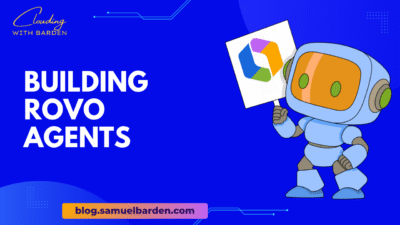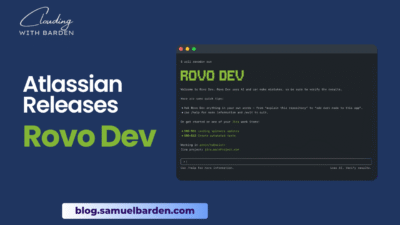When teams scale, work tends to scatter. Product requirements live in Confluence, development progress in Jira, launch tasks in Trello. The problem is not that the data is missing, it’s that context is missing. You can spend as much time hunting for the right information as you do acting on it.
I believe what Atlssian aims to do with Rovo is to close that gap. It’s a way to unify work items across Jira, Confluence, and Trello, with context preserved. In practice, this means you can ask questions, create links, and automate updates without jumping between tools.
Using Rovo for Cross-Linking
Unified Search & Discovery
The most immediate benefit is search. Rather than running separate searches in Jira and Confluence, you can ask:
“Show me all Jira issues linked to our Q4 roadmap in Confluence.”
Rovo responds with a consolidated view: the relevant Jira Epics, the roadmap document, and even connected Trello tasks. You get the whole picture, not a single tool’s slice of it.
Smart Summarization
One of the more powerful uses is summarization with linking. For example:
“Summarize this PRD and link it to open Jira tickets.”
Rovo extracts the essence of a Confluence PRD, identifies which Jira Epics and stories it relates to, and links them together. The result is traceability without manual cross-referencing.
Automation & Linking
Once the links are established, Rovo can suggest automations to keep them fresh. Suppose a Jira Epic moves to “Done.” Rovo can prompt you to update the linked Confluence page and Trello launch card. This prevents the usual situation where development work is complete, but documentation and release boards stay stale.
Contextual Collaboration
Because Rovo can be invoked in chat or team discussions, it acts like a bridge for live collaboration. You can type:
“@Rovo show related Jira tickets for this Confluence page.”
Within seconds, the relevant issues are pulled into the conversation. Teams don’t need to switch tools mid-meeting to find context — it’s right there.
Practical Rovo Prompts for Cross-Linking
The strength of Rovo lies in how naturally you can express intent. Here are concrete examples that teams can adopt today:
Jira + Confluence
@Rovo link this Confluence PRD to all Jira Epics tagged with MobileApp-Q4.
Creates traceability directly on the PRD page and attaches the linked Epics.
Jira + Trello
@Rovo sync Trello board ‘Launch Plan’ with Jira Epic APP-123. Show linked cards.
Keeps Trello and Jira synchronized, displaying which cards map to which stories and updating statuses automatically.
Confluence + Trello
@Rovo create Trello tasks for all action items in this Confluence meeting note.
Parses meeting notes, creates Trello cards, and links them back to the note for easy follow-up.
Cross-Tool Traceability
@Rovo show everything linked to Epic WEB-45 (Confluence specs, Jira stories, Trello launch tasks).
Produces a single view across all tools, letting you audit coverage and spot gaps quickly.
Why This Matters
Linking work across tools is a productivity and quality gain. Rovo reduces the friction of cross-linking to nearly zero. Requirements stay tied to implementation, launch tasks stay tied to development progress, and nothing slips through because it lived in the wrong place.
Instead of relying on people to remember to keep tools aligned, you make it a natural part of the conversation.
Stay Clouding!



